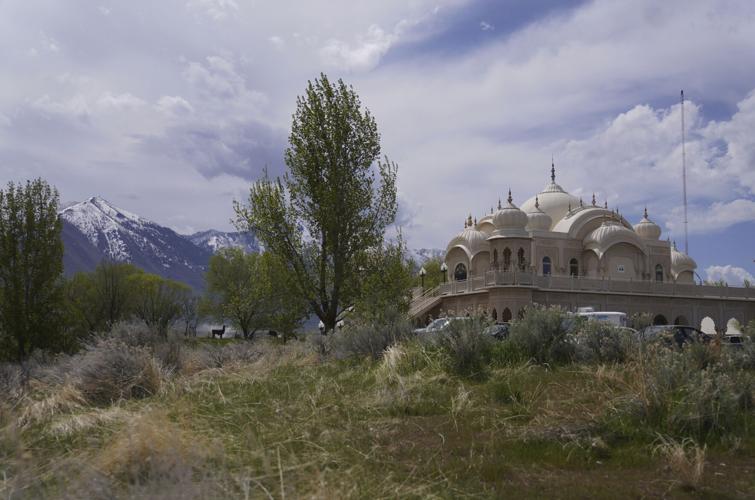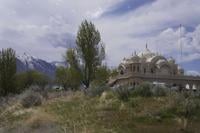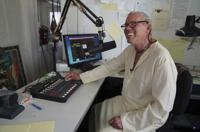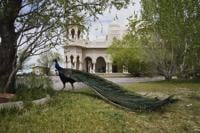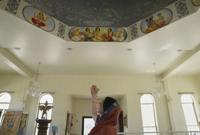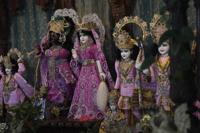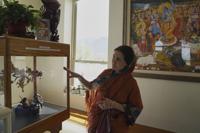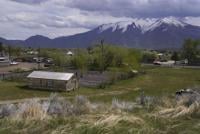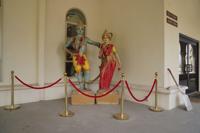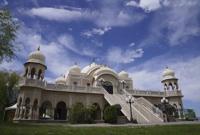SPANISH FORK, Utah (AP) — Charu Das was in Los Angeles in 1980 when a for-sale ad for a small radio station in rural Utah County — about 50 miles south of Salt Lake City — caught his eye.
Das and his wife, Vaibhavi Devi, have been longtime members of the International Society for Krishna Consciousness (ISKCON) also known as the Hare Krishna movement, a Hindu sect that worships Krishna as the supreme being. At $225,000, ownership of the radio station plus the parcel of land around it, seemed like a bargain to Das, whose dream at the time was to broadcast Krishna radio.
The Spanish Fork property in Utah County was not far from the state’s largest freshwater lake, tucked away amid rolling hills with the snow-capped Wasatch mountain range providing a majestic backdrop. Most county residents were — and still are — members of The Church of Jesus Christ of Latter-day Saints, widely known as the Mormon Church.
“We came here not knowing what Krishna had in store for us,” Das said.
Today, the little radio station is just a dot on their lush 15-acre (6-hectare) campus. At the property’s center sits the Shri Shri Radha Krishna Temple, a 10,000-square-foot (930-square-meter) house of worship. Its architecture is unique to temples in northern India with ornate facades, domes, a large covered pavilion, overhanging windows and archways.
Llamas and cows graze on the property's pastures. Peacocks crow as they strut around, suddenly fanning out their iridescent blue and green plumage. A lake provides water to cultivate flowers for worship and organic vegetables and fruits, much of which are used for a donation-based vegetarian buffet open to visitors.
“This place is like Vrindavan in Mormon country,” Das said, evoking the historical city in northern India, where Hindus believe Krishna spent much of his childhood. The city has thousands of temples dedicated to the worship of Krishna and his chief consort Radha — also one of the main deities at the temple in Spanish Fork.
Das and his wife said they hadn't planned to build a temple. Initially, they added a log house where they held Sunday services and began breeding and selling llamas to support themselves.
In the early 1990s, Vaibhavi Devi floated the idea of adding a temple, and they eventually built two: one on their property and the other in Salt Lake City. They were completed thanks in part to support and seed money from devotees, the local Hindu community and Latter-day Saints.
The radio station took a backseat amid construction and management of two temples, he said.
Devi, an artist, supervised the project, channeling her creativity throughout the process, her husband said. She hired an aerospace professional to design the smaller temple domes, and an Idaho company that fashioned potato storage structures to build the large, main temple dome. She also spent six months on scaffolding decorating the vaulted ceiling inside the main sanctuary, painting dancing demigods, lotus flower motifs and masterfully crafting foam to look like marble.
The temple now conducts school tours as one way to support itself; about 4,000 students from area schools visit the temple each year, Das said.
Monica Ringger Bambrough, a volunteer interfaith liaison for the Latter-day Saints church in the region, helps coordinate days of service for youth groups at the Krishna temple.
“Our kids don’t get to see how others live out their faith,” she said, adding that the only two non-Mormon houses of worship in town are the Krishna temple and the Jehovah's Witnesses Kingdom Hall across the street.
The Krishna temple’s biggest annual event is the Hindu Festival of Colors marking the start of spring, which draws thousands to Spanish Fork. It features color throws, mantra music, devotional dances and yoga. Das often takes the stage as master of ceremonies and “senior rapper.” He’s been writing rap songs, including one that captures a profound verse in the Gita about devotion and spirituality.
“The Bhagavad Gita is 700 verses divided into 18 chapters, which takes about 45 minutes to read,” he said. “But I have a three-minute rap version for you.”
Connecting with an audience through modern music has inspired him to spend more time in the radio station, which originally brought him to Utah. He's experimenting with AI-generated music, including a country-western jingle advertising their vegetarian buffet.
“This is it,” Das said. “This is how we're connecting with people. This is what Krishna brought us here for.”
Associated Press religion coverage receives support through the AP’s collaboration with The Conversation US, with funding from Lilly Endowment Inc. The AP is solely responsible for this content.

